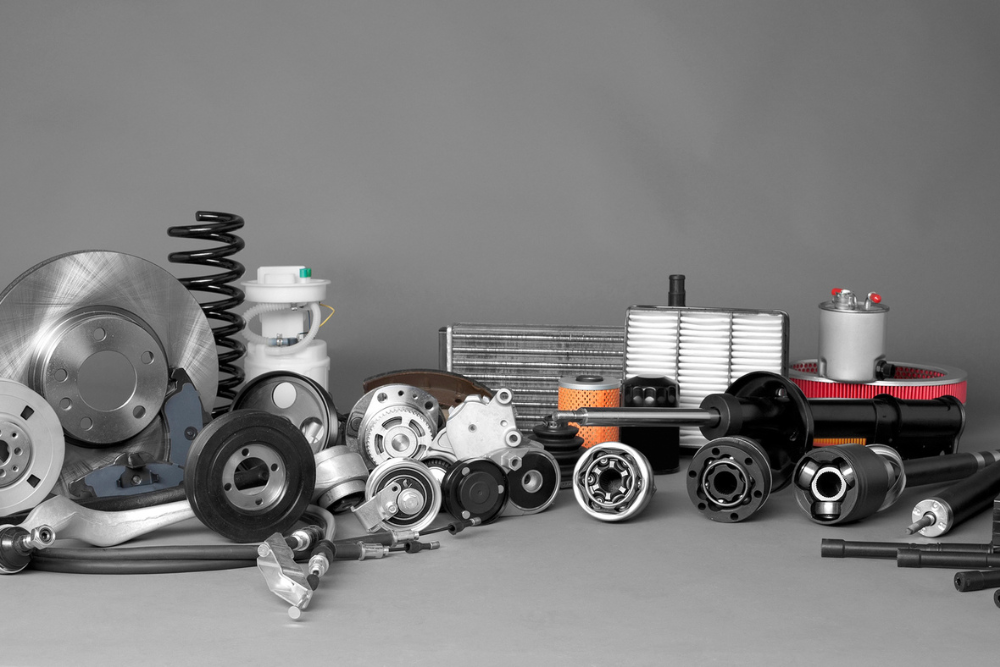Whether you’re a car enthusiast, mechanic, or just looking to replace a part in your vehicle, knowing the difference between OEM (original equipment manufacturer) and aftermarket parts is essential. Not only do you need to choose the right repair shop, but you also want to get the right components for the job. Before you decide, you will want to know about the components used for the repair. Here are some of the most common questions about these OEM parts.
Why Should I Buy OEM Parts?
When buying replacement components for your vehicle, you must decide whether to buy OEM parts or aftermarket ones. OEM replacement parts are specifically designed and manufactured for your vehicle’s make and model. For many owners, quality is a major advantage. Since the vehicle’s manufacturer makes them, you can trust that they will fit perfectly and function like the original parts. Additionally, OEM parts undergo rigorous testing to ensure they meet strict quality standards, giving you peace of mind when it comes to safety and reliability.
Another advantage of OEM parts is that they come with a limited warranty. If the part fails due to a defect, you can get a replacement or repair for free or at a reduced cost. However, remember that the warranty may be limited in scope or duration. You will always want to read the terms carefully or talk to your repair shop before making a purchase.
Are Aftermarket Parts a Better Option?
When it comes to repairing or upgrading your vehicle, you can choose between OEM or aftermarket parts. Aftermarket components are made by companies other than the vehicle’s original manufacturer. While they may be less expensive than OEM options, there are cons to using them in your car.
Quality varies widely between aftermarket manufacturers. Sometimes, lower prices indicate lower quality. Without the same rigorous testing and quality control as OEM parts, there is a risk that aftermarket components may not fit or function properly. Warranties are also a consideration. While some aftermarket manufacturers offer warranties, these are often limited in scope. If the part fails due to a manufacturing defect, you may not be able to get a replacement or repair for free or at a reduced cost.
Where Can I Buy OEM Parts?
There are several options for buying OEM parts. You can purchase these components at:
Dealerships
The most common place to get OEM parts is through the dealership where you bought your vehicle. You can also visit other dealerships that sell your make and model of vehicle.
Online Retailers
Several online retailers specialize in selling OEM parts.
Manufacturer Websites
Many vehicle manufacturers have websites that sell OEM parts directly to customers. Check your vehicle manufacturer’s website to see if they offer this service. Most of the time, these components can only be purchased through a licensed repair shop or dealer.
Local Auto Parts Stores
Some local auto parts stores may carry OEM parts for specific makes and models of vehicles.
When purchasing OEM parts, always ensure you’re buying from a reputable source to avoid counterfeit or low-quality parts.
What Is the Most Expensive OEM Part?
When it comes to automotive repairs, some parts can be very costly to replace. While a few basic parts can be replaced for a few hundred dollars, certain components can quickly drain your wallet and break the average budget.
Cylinders are very expensive, with some repairs costing up to $10,000. With the intricate nature of the engine, it does take significant time and labor to replace the damaged components. Also, transmissions are another high-cost item, ranging from $4,000 to $5,000 for a replacement. The part is a crucial component of the vehicle, and a malfunction can result in a costly repair bill.
Suspensions are also known for being pricey, with some repairs costing up to $3,000. These high costs are due to the complex system of springs, shocks, and other components that make up the vehicle’s suspension. Finally, brake lines are another costly repair item, with replacement costs often exceeding $1,000. Brake lines are vital for safe driving. Any damage or wear to the system can lead to a potentially dangerous situation on the road.
Are OEM Parts Always Required?
When it comes to collision repairs, OEM parts are typically the preferred choice for several reasons. These OEM components are designed to fit your vehicle. When a car is involved in an accident, the body panels can be damaged and require replacement. Installing aftermarket parts may not provide a secure fit, leading to potential safety hazards and suboptimal performance.
OEM parts are made to the manufacturer’s specifications, ensuring a secure fit and restoring your vehicle’s performance to its pre-accident condition. Another reason to choose OEM parts is that they are often required to maintain your vehicle’s warranty. Using aftermarket parts may void your warranty, leaving you responsible for the cost of any future repairs. Additionally, leasing companies often require OEM parts for any repairs to ensure the vehicle is restored to its original condition to retain its value.
Need an Auto Body Shop Near Me?
Using OEM parts is the safest and most reliable choice for collision repairs. While aftermarket parts may seem more cost-effective, they can lead to potential safety hazards and void your vehicle’s warranty. By choosing OEM components, you can ensure that your car is restored to its pre-accident condition and maintains its value.
At Elmer’s Auto Body, we are a reliable and experienced collision repair provider. Our family-owned and -operated business has served South Jersey for over 75 years. By choosing us, you can trust that your car will be repaired correctly and efficiently. When you need a reputable South auto body shop, make sure to call (856) 218-0202.

